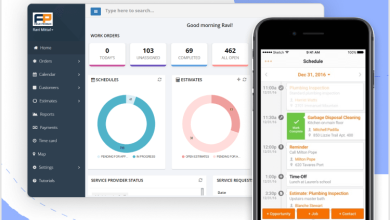Tech World: What is RDP?

Did you know that the internet alone has millions of RDP servers, with much more accessible via corporate networks? But, what is Remote Desktop Protocol, and is it secure for users?
RDP is a Microsoft network protocol that permits remote access to another computer. However, given recent significant cybersecurity breaches, the need to understand RDP has never been higher. RDP is a complicated program with many extensions, and it’s continuously being updated.
The remote desktop protocol is becoming a popular tool in today’s tech world. But what is it exactly, and how will it help you? This is how we explain RDP.
What Is a Remote Desktop Application?
It is easier to work from home if you connect your laptop to your work computer. For example, you can access files and run software from your computer, and you don’t have to go into the office. In addition, many business applications require a server or a virtual server environment.
The host device powers the remote desktop software and displays it through a remote desktop program on the user device. It captures and sends keyboard and mouse inputs from users to servers. For activities and files that demand a lot of graphics, extra software may be necessary.
How Secure Is RDP?
Even the most secure RDP is subject to network-level authentication. For example, almost every RDP request uses TCP port 3389. So a man-in-the-middle attack can intercept remote PC traffic.
Attackers can also imitate one of the transacting parties to manipulate the RDP server. Additionally, due to the use of equivalent credentials for remote login, RDP is exposed to brute-force attacks.
Securing RDP In the Tech World
We don’t want to disable RDP for security reasons because it is beneficial and adds value to companies. Here are some measures we can take to make RDP as safe as possible:
Using Complex Passwords
While eight letters with a combination of capital letters, lowercase, numbers, and characters was the standard recommendation for password complexity, this is no longer sufficient.
Passwords should now be at least ten characters long and contain a mix of capital letters, lower case letters, numbers, and symbols. Fortunately, the time needed to crack a password keeps increasing as the password length grows.
Limit the Number of Times You Can Log Into An Account
Limiting the login attempts before locking an account is another method for preventing brute force attacks. Brute force attacks can try large numbers of passwords in seconds.
Therefore, the cyberattack is stopped if an account is locked after three tries.
Using Multi-Factor Authentication
We all know that multi-factor authentication protects resources, especially RDP connections. While phishing and brute force attacks have proven effective in obtaining user passwords, they cannot access accounts without the second level of authentication.
Advantages of Remote Desktop Protocol
There are numerous advantages to using an RDP login. Here are a few examples:
- Reduce the time it takes for IT support to respond
- Maintains business continuity
- Reduce support costs by reducing travel time to a minimum
- Increase productivity
RDP is more important to the new remote work approach and cloud resource migration. This is because it enables staff to access vital apps and processes regardless of where they are. See here for cheap RDP options on purchasing RDP.
Feel Secure In Using RDP!
In the tech world, working remotely via RDP keeps data secure. Furthermore, it safeguards any work done with your user’s login information. And, because cloud backups are automatically scheduled, you’ll never have to stress about hardware failure.
Have you found this article helpful for tech knowledge? Then, read more posts on our page for more tips and resources on anything from tech to education and much more!






